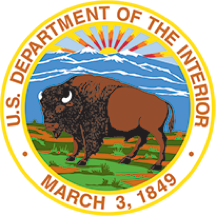A small team’s journey through digital maturity
As a small team, Digital.gov adopted user research and customer experience early. That foundation helps develop evidence-based strategies for today.
If you’re moving to .gov from another top-level domain, like .com, .org, or .us, here are some best practices to help you plan that transition.
Help create inclusive digital spaces with these tips for using self-descriptions in virtual meetings or conference calls.
A checklist of requirements for people who are presenting at a Digital.gov event.
Founded on three key pillars of successful cloud adoption—security, procurement, and workforce—the Cloud Smart strategy includes 11 action items from the Chief Information Officers (CIO) Council.
44 posts
As a small team, Digital.gov adopted user research and customer experience early. That foundation helps develop evidence-based strategies for today.
The summit highlighted digital transformation, emphasizing the significance of recent OMB memos for improving accessibility and customer experience.
More Veterans are turning to the U.S. Department of Veterans Affairs (VA) for healthcare and benefits, accessing these services online through tools like the VA Health and Benefits mobile app and VA.gov. With over 2.28 million app downloads and 17.8 million monthly visitors on VA.gov, these digital tools provide faster, easier, and more inclusive access to VA services. Learn more about how these technologies are often Veterans’ first interaction with VA by watching their latest video, Digital Front Door: Expanding Access to VA.— via U.S. Department of Veterans Affairs

The federal government is actively discussing the transformative potential of artificial intelligence (AI). It has the potential to transform our digital service delivery, automate tasks, and enhance data analysis. However, AI also presents challenges and risks such as bias and ethical concerns. The team at 18F provides a quick overview of AI, its place in government today, and the techniques and frameworks they are currently using to navigate this complex new landscape.— via 18F

The Department of Justice’s U.S. Trustee Program (USTP) oversees the administration of bankruptcy cases and private trustees. During the COVID-19 pandemic, virtual Section 341 bankruptcy meetings lead to more participation from both consumers and creditors, minimized delays, and saved time and money for all. Learn about USTP’s human-centered design process for a pilot program in three states to increase public access to these virtual meetings.— via Department of Justice

At the Department of Justice, Access DOJ and the Office of the Pardon Attorney (PARDON) partnered to simplify and streamline the presidential pardon application process. By conducting usability testing and gathering feedback, they identified key issues with the existing application, such as its complexity and length. See how redesigning the forms to be more accessible and understandable led to a more efficient process for both applicants and staff.— via Department of Justice

In 2021, the President’s Management Agenda identified federal customer experience as a priority area for improvement. To implement this priority area, the Office of Management and Budget (OMB) set two long-term, cross-agency priority (CAP) goals. In this study, the Government Accountability Office (GAO) reviews OMB and selected federal agencies’ efforts towards these CAP goals. Learn about actions taken by OMB and selected High Impact Service Providers (HISPs), how OMB has facilitated interagency collaboration, and the extent to which OMB has overseen and assessed progress on these CAP goals.— via Government Accountability Office

Launched last fall, the General Services Administration equity study on remote identity proofing aims to determine if biases exist in the algorithms used for online identity verification. The study has now reached its goal of recruiting 4,000 participants from diverse communities, and experts are ready to begin analysis of the data. Learn how the team at GSA plans to conduct this data analysis, and how their findings will lead to improved equitable services delivery in technology across the government.— via General Services Administration

The Federal Risk and Authorization Management Program (FedRAMP) has recently updated its governance structure to better serve its customers. Learn about their recently-formed FedRAMP Board, composed of federal executives; the FedRAMP Technical Advisory Group (TAG), composed of technology experts; and updates made to the Federal Security Cloud Advisory Committee (FSCAC). These groups collectively aim to strengthen and expand FedRAMP’s cloud service capabilities.— via FedRAMP

At USA.gov and USAGov en Español, the goal is to make content more useful to the public, and meta descriptions are one way to help people quickly find the government information they’re looking for. These brief summaries of webpage content appear in search engine results to entice users to click through, attracting visitors to agency websites. Regularly updating these descriptions based on user data can enhance their effectiveness. Read in more detail about their three tips to create effective meta descriptions: identify commonly searched keywords, write engaging and actionable descriptions, and ensure each one is unique.— via USA.gov

How to engage leadership personally, adapt communication styles, and choose appropriate timing for effective interactions and feedback.
It has been a year since USA.gov and USAGov en Español were relaunched using human-centered design principles. Using task backlog, the USAGov team has addressed content gaps, improved discoverability, and implemented technical updates. Through usability tests, visitor comments, and click behavior the team was able to unravel and respond to user feedback and unmet needs, leading to noticeable increases in visitor satisfaction and task accomplishment. Moving forward, the focus will shift to enhancing public engagement with the government, improving the search for benefits-related content, and exploring interactive and personalized user experiences.— via USA.gov

The Federal Emergency Management Agency Office of External Affairs is convening risk and crisis communicators and community leaders who are on the front-line of the climate and emerging hazard crises. Attend the free, June 10, 2024, summit virtually, or in Washington, DC. The agenda includes: the sharing invaluable tools and insights, how to implement culturally competent and accessible communications, how to integrate behavior change strategies, and more. An ASL interpreter will be provided.— via Federal Emergency Management Agency

Every day, live agents at USA.gov’s Public Experience (PX) Contact Center answer questions from the public about government benefits and services. Learn how the PX Contact Center develops a workforce of excellent agents, using immersive onboarding, tailored and continuous training, feedback loops, and calibration meetings to empower their agents to deliver accurate information. USA.gov’s system for employee and contact center management ensures that every customer interaction leaves a lasting impact.— via USA.gov

Learn how the Open Data, Design, and Development (ODDD) team at the Department of the Interior (DOI) transitioned from Google Analytics - Universal Analytics to Google Analytics 4! Discover how the ODDD team coordinated with the Digital Analytics Program, developed explorations (instead of custom reports), and set up their own DOI agency property.— via Office of Natural Resources Revenue

Each year, more than 400 million individuals, families, businesses, organizations, and local governments get information and services from about 430 federal agencies and sub-agencies. The Biden-Harris administration is driving a bold vision for how government agencies serve their customers digitally with OMB’s ten-year roadmap for a modern digital experience. Agencies have already made significant strides. Learn about recent successes by the IRS, CDC, NASA, and FEMA, and how OMB will continue to collaborate with agencies to ensure ongoing improvement in digital government services.— via The White House

How well do 18F software development practices work? The 18F team reflected on a recent project for the Cybersecurity and Infrastructure Security Agency (CISA) .gov registry to gauge the effectiveness of six recommendations aligned with what they actually did.— via 18F

The Open Data, Design, and Development (ODDD) team has replaced signed consent forms with a more accessible user research agreement process, offering multiple opt-in points. This ensures informed consent and participant autonomy. Explore why and how the ODDD team implemented this comprehensive participant consent process in their user research.— via Office of Natural Resources Revenue

Each month, USAGov’s content designers spend many hours ensuring that the content on USA.gov and USAGov en Español is up-to-date, accurate, and meets user needs. Learn how their team does holistic reviews of each topic section based on a rolling calendar with the goal of updating all content at least every 6 months.— via USA.gov

Digital.gov
An official website of the U.S. General Services Administration